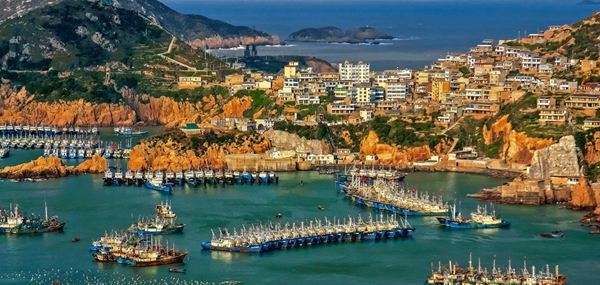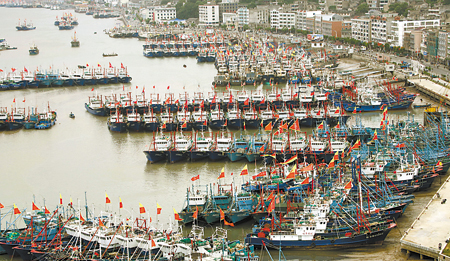Marine economy

Zhejiang's marine economy exceeded 670 billion yuan ($97.32 billion) in 2016, a year-on-year increase of 8.4 percent, according to data released at the provincial meeting of ocean and fishery on Feb 15.
The output of the marine economy accounted for 14.4 percent of Zhejiang's total economy last year, with a growth rate of 1.6 percentage points higher than the national average. The staggering growth has resulted from the province's rich resources and strong government support.

[Photo provided to chinadaily.com.cn]
The ocean is where Zhejiang's economic potentials and advantages lie. In 2016, Zhejiang was home to China's only pilot showing sustainable development in marine fisheries. In its 13th Five-Year Plan (2016-2020), the province confirmed the vital roles of protection and the utilization of marine resources. The plan also attaches importance to the protection of marine ecology and coastline, the prevention of ocean disasters and the transformation and upgrading of fisheries.
Zhejiang still seeks scientific and sustainable ways of exploring and utilizing its marine resources. Requirements for the renovation of sea areas, islands and coastlines were made clear at the beginning of February. A red-line system, assigning different levels to protected areas, will be released to improve the marine ecology. Red-line is often used in China to describe a limit that should not be crossed. Anyone or any place that challenges the system will be punished by limiting their access to ocean resources.
In the fishery sector, Zhejiang will release detailed policies to encourage the industry's innovative development and to ensure fishermen's rights and interests.

Shipu fishing port in Xiangshan county of Ningbo, Zhejiang province. [Photo by Zhang Heping]
MOST POPULAR
- 1 China to continue opening up its mega-market to world: premier
- 2 Policies concerning expats, foreign enterprises in November 2025
- 3 China to enhance convenience for inbound tourism: minister
- 4 Departure tax refund applications surge 285% as inbound tourism rebounds
- 5 China's foreign trade up 3.6% in first 11 months of 2025







